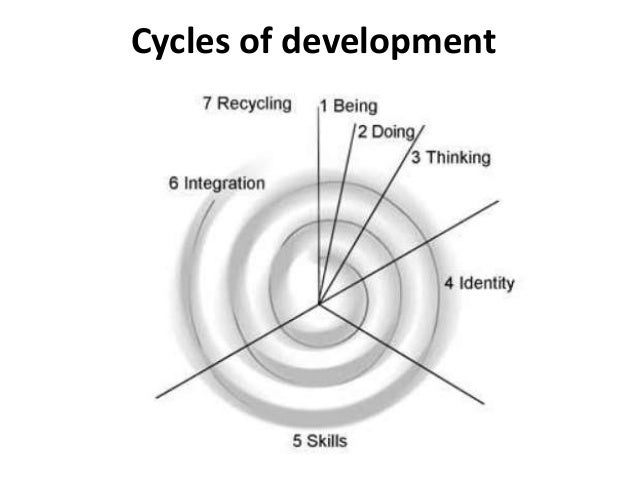A controversial title in a world where we are sensitive to gender-specific language.
…. but I am referring to the work of Erik Erikson, a psychologist from Scandinavia, who working on Human Growth and Development in the middle of the twentieth century. This Erikson is not to be confused with Milton Erikson, an American doctor, I quote elsewhere.
With some translation, Erik Erikson’s work still has a lot to offer to us. I will refer, also, to a Transactional Analytic (TA) tradition I attribute to Pam Levin.
Erikson’s work
is well summarised at:
https://www.verywellmind.com/erik-eriksons-stages-of-psychosocial-development-2795740
…. where you can research this area in greater detail.
- Stage 1: Trust and Mistrust
- Stage 2: Autonomy vs. Shame and Doubt
- Stage 3: Initiative vs. Guilt
- Stage 4: Industry vs. Inferiority
- Stage 5: Identity vs. Confusion
- Stage 6: Intimacy vs. Isolation
- Stage 7: Generativity vs. Stagnation
- Stage 8: Integrity vs. Despair
…. represented in this illustration:
:max_bytes(150000):strip_icc():format(webp)/2795740-article-erik-eriksons-stages-of-psychosocial-development-5ac3df9e875db90037ffa803.png)
Let’s take a closer look at the background and different stages that make up Erikson’s psycho-social theory. Erikson believed that our personality developed in a series of eight stages, as listed. He shared with others an interest in the impact of social experience across the whole lifespan.
Erikson was interested in how social interaction and relationships played a role in the development and growth of human beings. He implied that the ‘stage’ was resolved by dissolving a tension between internal drives, as listed above. Note how this process re-appeared in the development of the Dialectical Behaviour Therapy developed by Marsha Linehan.
Erikson’s theory assumed that healthy growth built on the preceding stages and paved the way for the next period of development. Each resolution of a conflict in each stage provided a turning point in development.
Is our future determined or is there wiggle room available?
Unlike more modern practitioners, Erikson shared with Freud a sense of determinism that healthy development centred on resolving each stage, one after another. The quality of the ‘work’ we did on resolving a development stage had the potential to advance or impede our later development. Small windows of opportunity had potential large impact on our competence in learning to live in a social environment.
In conventional models of human growth and development, there is a general view that this ordered handling of our stages of development created the necessary sense of mastery, sometimes referred to as ego strength or ego quality. The view was that when stages were managed poorly, then the person is likely to emerge with a sense of inadequacy in that aspect of development.
Is there a ‘correct’ order in which our psycho-social development has to evolve?
Today, there is less pre-occupation with the need to deal effectively with these stage-conflicts in a ‘correct’ order. The essential skills needed to develop a strong sense of self can re-emerge at other times. That said, it is the case that long-term disruption of these stages of development can have long-lasting impact. This is particularly true in our infant years when our bodies are more impacted by trauma – in a physical and emotional sense.
For that reason, I tend to use the expression that our early years’ experiences can cast ‘long shadows’ on our lives. More recent, particularly more recent single incidents, may cast a ‘short shadow’. It will not surprise you to learn that long shadows present larger challenges in the therapy room – for therapist and ‘client’ as they work together to sustain change.
Cycles of development
Let’s view Erikson’s material with the more modern ”life span’ and ‘spiral’ models of human growth and development. Pam Levin is one authority I want mention. A summary of her work can be found in her text Cycles of Power from which this illustration emerges:

What Levin did was to move the process of development away from a deterministic perspective and turn it towards the idea of ‘skills’ development. All the skills she lists above are going to help us be rounded people, but her spiral implies that we can pick up, practice and hone those skills on several occasions when the opportunity presents itself.
This information, then, can inform some safe experiments. For instance, there are ‘phase of life’ experiments that can be done by any-one every 7-10 years. You will notice that Erikson’s ‘stages’ tell us that we experience not only the well-publicised mid–life crisis but, in fact, a series of cyclical crises every now and again.
Have you noticed how, when approaching a ‘ten’ in our age, we often do some personal appraisal? Often our society marks these margins – a move to secondary school at 11 years, a move into further study or work in the late teens and a series of relationship changes [or temptations (!)] or some other shift at 30, 40 and 50 years – and so on. I am just over 75 years now, and I am still working on what it means to be (semi-) retired.
You can use any one of these life changes as a focus for many of the safe experiments listed on this web site.
In particular, note how the Road Map experiment helps highlight where and when those changes are located on our own personal time-line.
Why not re-visit that and see where it might take you now? Or, maybe, remind yourself about the scenic route and see if you fit into that view of change.
If you want to look at the wider picture and consider a ‘political’ issue: what would be your view on the emergence of ‘trans’ and gender identity issues in recent years? Can Erikson’s stage 5, Identity and Role Confusion, and Levin’s stage four, with a similar title, cast any light on the development of each individual – at a time when the guarantees of our formative years start to apply no longer?
Some other pages to consult
…. with small victories and small defeats
